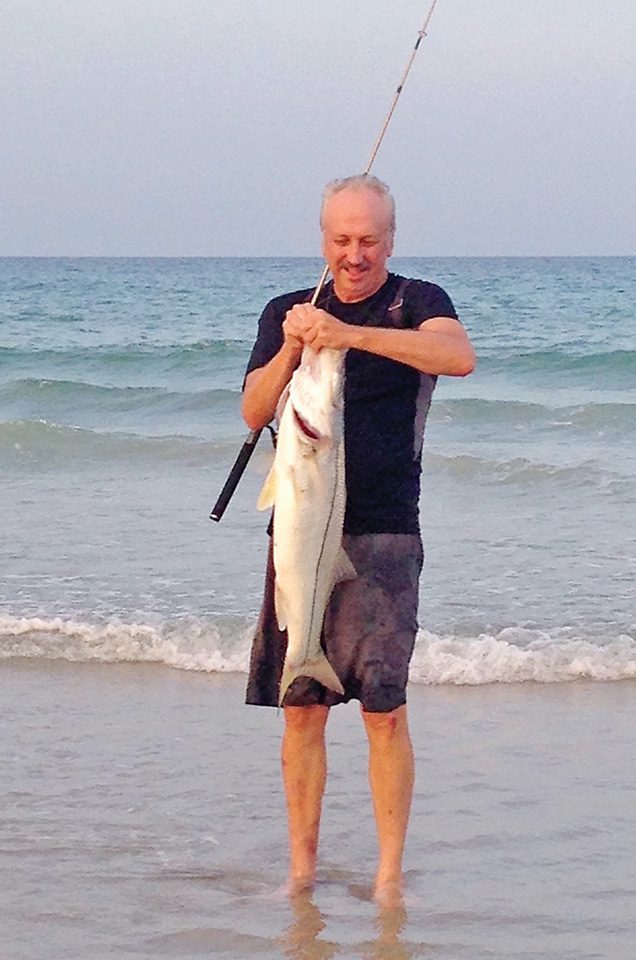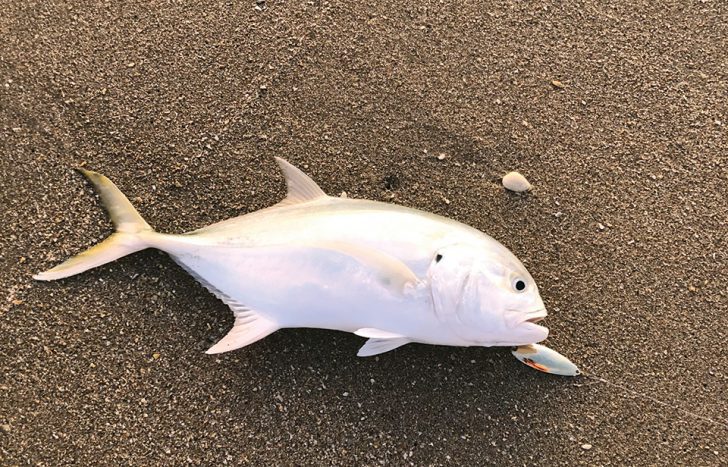
Follow the Bait: Fish will be following pods of glass minnows, greenies and other bait as they start heading north. Look for pelicans in the water and gulls and terns that dive at the tops of waves, picking off bait. When you go to the beach, look for birds that have located schooling bait or bait pods. The general rule is: No birds, no bait. Find a beach where you can see birds and/or bait. If you walk down to the water, you will see activity around the trough behind the closest breaking waves. You will see splashing or small fish jumping if there’s going to be fishing action. Birds will usually be concentrated on large schools of bait and big pods.
The Early Bite is Best: My experience is 15 minutes before daybreak until early morning is the best time to fish the beach. It’s the best snook bite, and the fish will be around the trough because the bait will be in the wash. Usually the bait will start moving out after daybreak.
Reels and Tackle: I use a medium to light spinning reel (400 series) with 10- to 20-pound white braid on a 7-foot rod. A long rod gives you longer casts. I use a 30- to 40-pound fluorocarbon leader attached to the braid with a uni knot and attach the lure with a loop knot for better movement.
Lures: My favorite search bait is a 3/8- to ½-ounce chartreuse jig with a pearl white paddletail, which gives the lure more movement and even works with a steady retrieve. That steady retrieve is useful in rough, windy weather.
I use a variety of retrieves depending on whether the fish are hitting near top or off bottom. Usually, I try and fish near the top by holding my rod tip high, twitching the lure, and using a fast retrieve. For bottom feeders like whiting and croaker, I let the jig sit on the bottom and give it an exaggerated jerk, which brings it to the top.
I also like shallow-running crankbaits and spoons in gold or silver. For long casts in wind and bigger fish, try 2-ounce silver crocodile spoon.
Richard Matteson writes for Stuart Rod and Reel Club. Contact him at (336) 414-3440.
